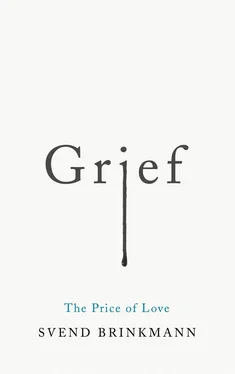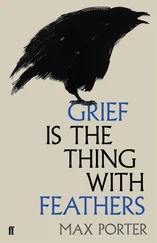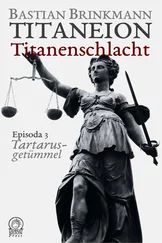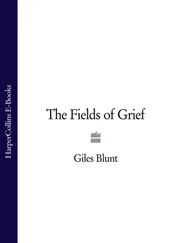In addition to the changes in recent centuries in the practice of grief – and research into it during the same period – it is also relevant to mention changing relationships to death. Historically, far more research has been conducted into death than grief. The biggest name in the field is the French historian Philippe Ariès, who researched changing attitudes to death from the Middle Ages to modern times (Ariès 2009). He divided the history of death into the following epochs: the tamed death (the medieval approach, in which death was considered ubiquitous and familiar due to high levels of mortality and widespread rituals); the death of self (from the early Renaissance, when more elaborate ceremonies were introduced and the dying were even permitted to plan their death); the death of the other (the increasing alienation from death in modern society, and an increasing focus on the mourner, as discussed above in a Victorian context); and finally the forbidden death – a modern phenomenon, in which, according to Ariès, death is more taboo than ever. Death is now increasingly controlled and institutionalised in hospitals, separate from ordinary life. Grief is therefore, almost by necessity, more readily seen as a pathological condition to be treated, rather than a necessary experience governed by societal norms (see Jacobsen and Kofod 2015).
Jacobsen has recently proposed a new, fifth phase to Ariès’ chronology, which he calls the spectacular death . In the twenty-first century, death is designed, staged and rendered spectacular to a greater extent than previously (Jacobsen 2016). Not in all cases, of course, but it can be identified as a significant historical shift away from the taboo that used to epitomise the modern era. Tony Walter has criticised the widespread notion of the death taboo, and in a new article speaks instead about the pervasive dead (Walter 2019). His contention is that the twenty-first century has witnessed the reintegration of death into everyday life. He bases this on a wide range of trends, including grief theories that emphasise continued bonds with the dead, digital memorials on social media, renewed interest in angels and the afterlife, and new funeral practices. He presents plenty of evidence to suggest that the widespread thesis of death as the last great taboo was at best oversimplified, and possibly even completely wrong.
Just as I began this chapter by referring to a series of cultural representations of grief, I could have done the same with regard to death. There are films and TV programmes about death, death cafés, and death features prominently as a theme in novels and visual art. The history of death is, at its core, a story of what the focus has been in the management of the transition from life to death. 5That focus shifted from the medieval concern for the soul and its salvation to early modernity’s interest in the corpse (it was only slowly and gradually that scientists were allowed to examine dead bodies at all) (Walter 1999: 135). In modern times, the focus switches again, to interest in the bereaved. Grief practices are no longer primarily for the sake of the deceased – to ensure a good journey to the hereafter – but for the sake of the bereaved, to ensure a good psychological journey through the rest of their lives. This is probably most true in Protestant societies, which do not subscribe to a particular funerary theology (in the form of a sacrament or ritual to help the dead on their way to heaven) (Walter 1999: 33). In simple terms, we have moved from a religious culture to a psychological one; from care for the soul of the deceased , to care for the psychological well-being of the bereaved . This perspective is consistent with cultural analyses highlighting the fact that psychology has in many ways replaced religion for the individualised human being. In effect, psychologists are becoming more and more like the new priesthood, offering advice, relieving symptoms and aiding the development of the individual (Brinkmann 2014b).
Despite the background outlined above, this book will not explore the theme of death in depth, as it serves merely as a backdrop for an analysis of grief, for which death is a necessary precondition. However, it is valid – if unsurprising – to note that there are parallels between the developments over time in relation to both death and grief. In short, both show signs of increasing individualisation – away from fixed rituals and templates, to individual choices regarding death, burial and grieving practices. In extension of this, Tony Walter (1999: 207) has summarised the recent history of grief and divided it into three epochs:
1800–1950 (approx.): Early industrial society and Romantic culture. The Victorian era’s aesthetic cultivation of grief, with a range of practices to maintain the memory of the dead.
1950–1980 (approx.): Complete modernity and technical rationality. Focus on ‘grief work’, standardised stage and phase theories and increasing medicalisation.
1980–present (approx.): Late capitalism and consumer society. Individualisation and subjectification of grief (‘the customer is always right’), underlining that everybody grieves differently.
For Walter, the current conception of grief is torn between, on the one hand, a ‘modern’ understanding, where grief is framed by standardised theories about phases, and in which health systems are on hand with diagnoses and treatments for those who fall outside the normative frameworks; and on the other, a ‘post-modern’ understanding, in which grief is seen as an individual experience of suffering, which must be allowed to proceed free from the judgement of others. The post-modern understanding also includes the possibility of ‘post-traumatic growth’, i.e. that the experience of loss may give rise to existential reorientation and personal development. The problem with the former (the ‘modern’ understanding) is that it can be experienced as intrusive or even insulting when others relate normatively to our personal experience of loss and grief. The problem with the latter (the ‘post-modern’ understanding) is that it can entail a risk of the individual being abandoned, without fixed cultural templates and rituals to shape their personal grief.
Parkes and Prigerson share this concern, arguing that an agreed period of grief ‘provides social sanction for beginning and ending grief, and it is clearly likely to have psychological value for the bereaved…. the absence of any social expectations, as is common in Western cultures today, leaves bereaved people confused and insecure in their grief’ (Parkes and Prigerson 2010: 211). In other words, there is a risk of a kind of tyranny of formlessness, to use an expression taken from the Danish philosopher K.E. Løgstrup. Walter (1999: 119) notes dryly that when we look at all sorts of cultures, there is no society – save perhaps our own – where people are left alone with their grief.
The key question for our era, then, is whether people can grieve without a ‘script’ or ‘template’. We might speculate whether the current debates about psychiatric diagnoses for complicated grief are based on a recognition that a definition of ‘wrong’ grieving becomes necessary when there is no general consensus about the grief process. Paradoxically, while diagnoses are essentially used to define the abnormal, they also provide new ways in which to be normal. It might be said that the diagnoses at least offer ‘normal forms of abnormality’, which may help in an era when norms are otherwise diffuse (Kofod 2015). I will return to this toward the end of the book. First, I will look at humans as creatures with the potential to grieve, at the phenomenology of grief, and at the role of the body and culture in the grieving process.
Читать дальше












